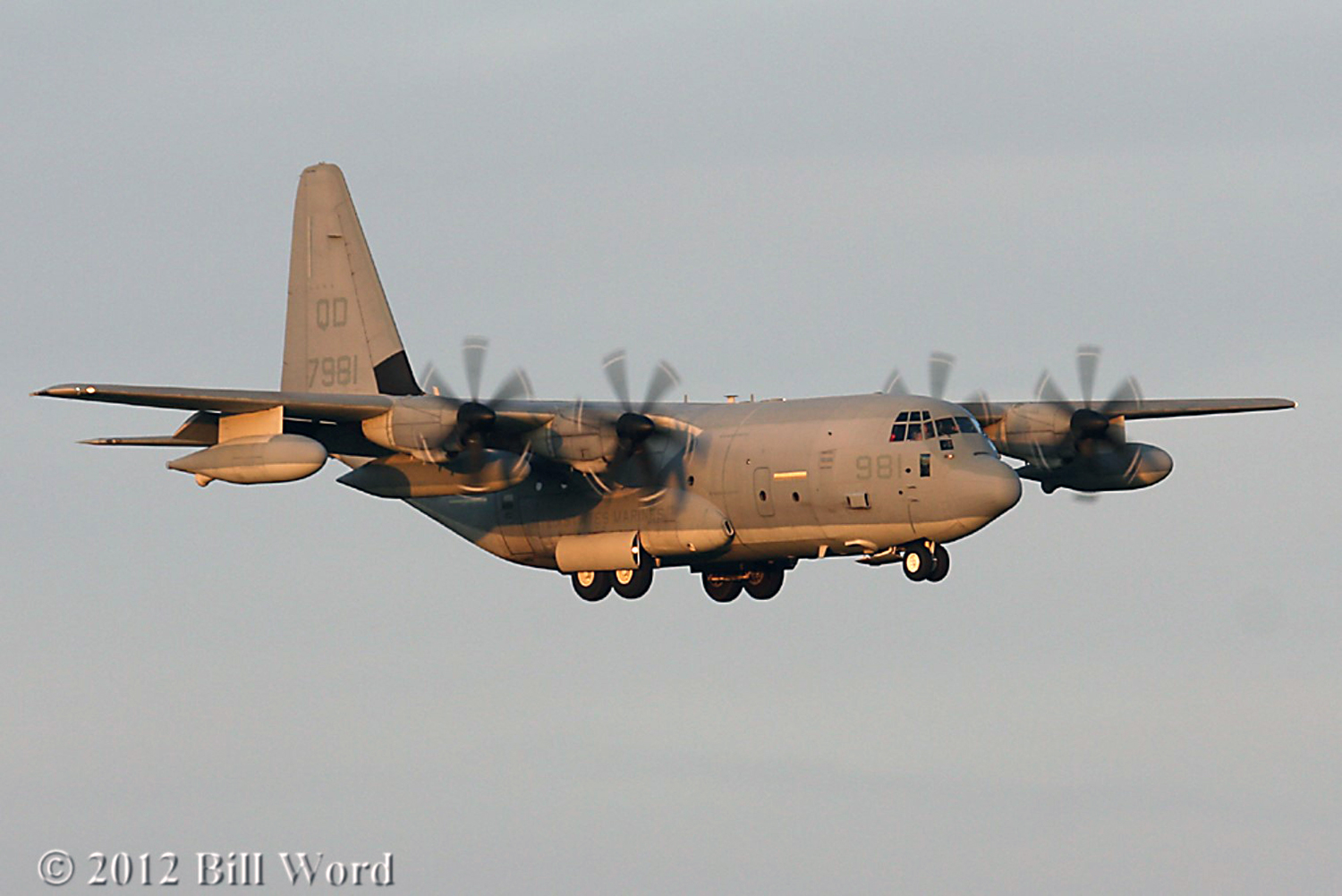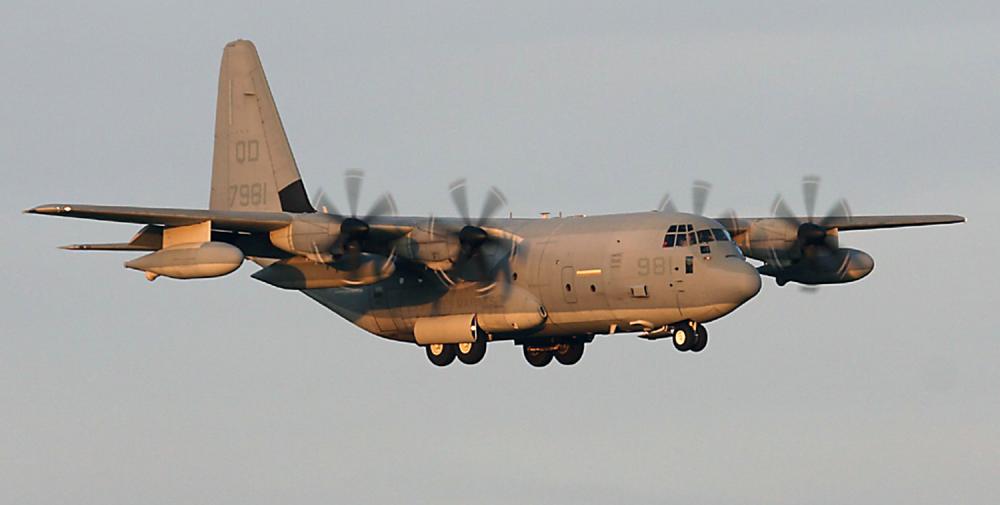Date & Time:
Dec 6, 2018 at 0200 LT
Type of aircraft:
Lockheed C-130 Hercules
Registration:
167981
Flight Phase:
Flight
Flight Type:
Refuelling
Survivors:
No
Site:
Lake, Sea, Ocean, River
Schedule:
Iwakuni - Iwakuni
MSN:
5617
YOM:
2009
Flight number:
Sumo 41
Country:
World
Region:
World
Crew on board:
5
Crew fatalities:
5
Pax on board:
0
Pax fatalities:
0
Other fatalities:
0
Total fatalities:
5
Circumstances:
The crew departed Iwakuni Airport on a refuelling mission over the Pacific Ocean under callsign 'Sumo 41'. Following a night refuelling operation, the four engine airplane collided with a McDonnell Douglas F/A-18 Hornet. Both aircraft went out of control and crashed into the ocean some 200 miles off Muroto Cape, Japan. The United States Marine Corps confirms that two Marines have been found. One is in fair condition and the other has been declared deceased by competent medical personnel. All five crew members from the Hercules are still missing after two days of SAR operations and presumed dead. The KC-130 Hercules was assigned to Marine Aerial Refueler Transport Squadron 152 (the Sumos), 1st Marine Aircraft Wing.
Probable cause:
The CDA-RB’s report determined four interconnected causal factors led to the 6 December 2018 mishap. First, the flight lead (F/A-18 call sign, Profane 11) requested, and received approval for, an un-briefed, non-standard departure from the C-130 tanker (call sign, Sumo 41). This departure placed the mishap pilot (F/A-18 call sign, Profane 12) on the left side of the tanker. A standard departure would have placed both F/A-18s on the right side of the tanker. Second, Profane 11 chose an authorized, but not optimized, lighting configuration. After tanking, Profane 11 placed his external lights in a brightly lit overt setting, while the C-130’s lights remained in a dimly lit covert setting. These circumstances set the conditions for Profane 12 to focus on the overtly lit Profane 11 aircraft, instead of the dimly lit tanker. Third, Profane 12 lost sight of the C-130 and lost situational awareness of his position relative to the tanker resulting in a drift over the top of the C-130 from left to right. Fourth, Profane 12 was unable to overcome these difficult and compounding challenges created by the first three factors. As a result, when Profane 12 maneuvered his aircraft away from Profane 11, he moved from right to left and impacted the right side of the tanker’s tail section. It must be noted, this specific set of circumstances would have been incredibly difficult for any pilot, let alone a junior, or less proficient pilot to overcome.
The CDA-RB determined the previous 2018 mishap command investigation did not capture a completely accurate picture of the event. The CDA-RB determined portions of the investigation contained a number of inaccuracies. Specifically, the 2018 command investigation incorrectly concluded medication may have been a causal factor in the mishap, the mishap pilot was not qualified to fly the mission, AN/AVS-11 night vision devices contributed to the mishap, and the previously mentioned mishap in 2016 had not been properly investigated. These conclusions are not supported by the evidence, and are addressed in detail in the CDA-RB report. While the 2018 CI contains a few inaccuracies, the CDA-RB does confirm the command investigation’s conclusions related to organizational culture and command climate as contributing factors to the mishap.
The CDA-RB made 42 recommendations to address institutional and organizational contributing factors. As a result, the Assistant Commandant directed 11 actions to address manpower management, training, operations, and medical policies. The Director of the Marine Corps Staff will lead the coordination of all required actions to ensure proper tracking and accomplishment.
The CDA-RB determined the previous 2018 mishap command investigation did not capture a completely accurate picture of the event. The CDA-RB determined portions of the investigation contained a number of inaccuracies. Specifically, the 2018 command investigation incorrectly concluded medication may have been a causal factor in the mishap, the mishap pilot was not qualified to fly the mission, AN/AVS-11 night vision devices contributed to the mishap, and the previously mentioned mishap in 2016 had not been properly investigated. These conclusions are not supported by the evidence, and are addressed in detail in the CDA-RB report. While the 2018 CI contains a few inaccuracies, the CDA-RB does confirm the command investigation’s conclusions related to organizational culture and command climate as contributing factors to the mishap.
The CDA-RB made 42 recommendations to address institutional and organizational contributing factors. As a result, the Assistant Commandant directed 11 actions to address manpower management, training, operations, and medical policies. The Director of the Marine Corps Staff will lead the coordination of all required actions to ensure proper tracking and accomplishment.


